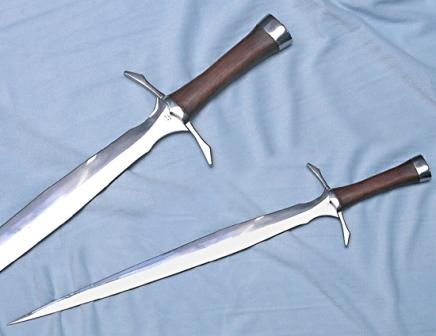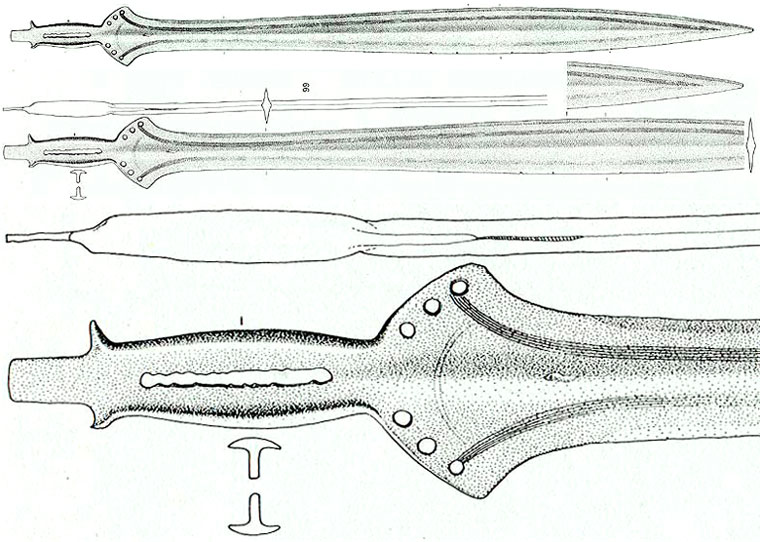I attached three of these Fletcher swords.







| Jared M. Olson wrote: |
| I realize that Angus Trim and Christian Fletcher both classify these swords as "contemporary" and "fantasy." The question burning in my mind is this: would these contemporary swords be at all effective against their historical counterparts? I have grown fond of the Oakeshott Type XV, XVI, and especially XVIII for their dual functionality, both cutting and thrusting. What sort of function would these modern leaf blade swords have? Would they suffer any gross disadvantages agaist their historical straight edged counterparts, or are the differences purely cosmetic? Thanks for those who have posted and for your help thus far. |
| Jared M. Olson wrote: |
| Would they suffer any gross disadvantages agaist their historical straight edged counterparts, or are the differences purely cosmetic? .... |

| Jared Smith wrote: |
|
I also wonder if there is not some type of symbolic significance (tree lore or other aspect) of the shape that would also have made it desirable among those who used it? |
| Sergio Duarte wrote: |
| Jumping to mace design does this concentration of weight in the head make them slow and didifficulteapons to redirect? I remember that it is said the mace was one of the favorite weapons for close combat in medieval times. Sorry to post this question here but it came to my mind now. :confused: |
| Sergio Duarte wrote: | ||
Some people say that it could be a phallic symbolism maybe associated with fertility and power. |
| Sergio Duarte wrote: |
| Greetings
First I would like to know if someone knows why they stoped making flat wide tangs like on most of bronze swords that actually have a tang. |
| Quote: |
| Second:
With longer swords with more reach the Cog is even further from the hilt and thus slows the sword down even more. |
| Quote: |
| So what advantage you might have in the cut is diminished by the increased disadvantage of having a sword, which was harder to redirect or recover…
|
| Quote: |
| Jumping to mace design does this concentration of weight in the head make them slow and didifficulteapons to redirect? I remember that it is said the mace was one of the favorite weapons for close combat in medieval times. Sorry to post this question here but it came to my mind now. :confused: |
| Quote: |
| For Northern Europe, swords were replaced by short daggers around 400-500BC. So the sword making tradition was lost. This is the reason why when swords appeared again during the la Tene period, they were of very different shape and construction. |
| Sergio Duarte wrote: |
| I am still not perfectly convinced about this argument :cool: Sorry. I have little knowledge about the times we are talking about but it seems to me that the "vanishing" of swords is just a vanishing in grave finds. Is it possible that swords being of iron meant that they were more costly to produce and so they would be kept in use as long as possible? |
| Quote: |
| My point is that they could bury their dead with daggers (I think they where often more ceremonial than effective daggers).
If any of you has a copy of the book "Swords and hilt weapons" there is some interesting info there on the chapter called "The age of iron" is said "In many areas, early Iron Age swords differed little from those in use in the Bronze Age". Further ahead the author proceeds by saying "In the later Hallstatt period it became less<common to bury swords with the dead. Shorter weapons, daggers were provided instead." There is no reference about the disappearing of swords. They were just no buried with the dead. |
| Quote: |
|
Nope. Iron is much easier available, so if anything, swords would have become a lot cheaper. |